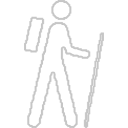

Historic Philadelphia
Places: 49 POIs
Distance: 2.17 mi
Duration: 2h:21m
Tour #313
About this English self-guided 2h:21m walking tour in Philadelphia
This fun and exciting historical tour of Philadelphia covers historic buildings, parks, statues, and gardens in addition to some interactive museums, famous neighborhoods and cemeteries. Ever wanted to see the Liberty Bell? It's here too. Join us!
- Category
-
Language
English
-
Region
North America / USA
- Country
- City



